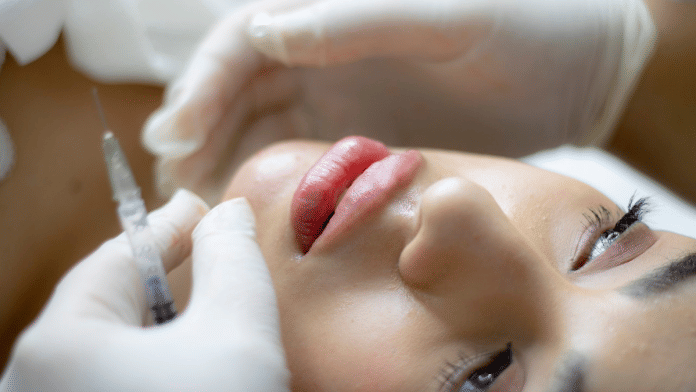Cosmetic surgery has become a buzzword in the world of fashion and lifestyle today. However, along with its growing popularity, there are also emerging risks of developing fungal infections after undergoing the procedure. In May 2023, the United States and Mexico recorded an outbreak of fungal meningitis, affecting more than 200 patients who had received epidural anaesthesia during liposuction, breast augmentation, and Brazilian butt lifts. Some patients were hospitalised, and three of them died.
As a practising dermatologist in India, I have personally encountered cases of post-cosmetic surgery infections, including fungal infections and skin tuberculosis, around a decade ago. One contributing factor to these infections was the injudicious provision of Botox treatments. At that time, dermatologists had limited options and often had to use the same set of Botox equipment on multiple patients, which ultimately led to skin infections despite the absence of trauma and meticulous post-surgery care. Although infections can develop due to various factors, implementing safe and healthy cosmetic surgery practices can significantly reduce the likelihood of such issues, and timely treatment can help mitigate problems at an early stage.
Raising awareness about the most common risk factors and ensuring adequate care during surgical procedures is the crucial first step. Besides fungal infections, excessive fillers can also lead to other complications such as the Tyndall effect. When fillers are administered in large amounts or aren’t placed correctly in the subcutaneous layer of the skin, they can displace and accumulate in the under-eye area, causing blood vessels to appear superficial, puffy, and bluish. But first, let’s understand fungal meningitis a little more.
Also read: Don’t get fooled by miracle beauty ads – this quackery must be stopped
What is fungal meningitis?
Fungus meningitis is one of the riskiest infections that can affect the human central nervous system. While it typically extends beyond the meninges, which are the thin tissue layers surrounding the brain, it is conventionally referred to as fungal meningitis due to the significant inflammation it causes in the brain and meninges. This condition leads to the formation of pits in the brain, resembling those caused by encephalitis.
Cryptococcus neoformans and Candida species are the most common kinds of fungi that cause fungal meningitis. These organisms can infect people under specific circumstances and may be present in dirt, bird droppings, or decomposing vegetation in the environment.
Also read: Is 30 a good age to start using anti-ageing products? Here are some dos…
Risk factors
There are several risk factors associated with fungal meningitis, including:
Skin infections: Fungal infections on the skin can sometimes spread to the bloodstream and subsequently reach the central nervous system, causing fungal meningitis. Individuals with compromised immune systems are more prone to this type of infection.
Weak immune system: People with weakened immune systems, such as those with HIV/AIDS, individuals undergoing chemotherapy or radiation therapy, organ transplant recipients, or those taking immunosuppressive medications, are more susceptible to fungal infections, including fungal meningitis.
Contaminated injections: In some instances, outbreaks of fungal meningitis have occurred due to the use of contaminated injections. A notable example is the 2012 outbreak in the United States, which was linked to contaminated steroid injections.
Inhalation of fungal spores: In rare cases, fungal meningitis can develop when individuals inhale fungal spores. This can happen in environments with high levels of fungal spores, such as construction sites or places with contaminated air conditioning systems.
Symptoms of fungal infection may include persistent headaches, a stiff neck, nausea, vomiting, fever, back pain, hallucinations, and increased sensitivity to light.
When to see a doctor?
If any symptoms of fungal meningitis are observed, it is crucial to seek medical attention promptly. It is important to note that fungal meningitis is relatively rare compared to other forms of meningitis, such as viral or bacterial meningitis. However, it can turn into a severe condition and even prove to be fatal. Patients must undergo the necessary diagnostic testing for fungal meningitis under the guidance of a specialised doctor.
Several studies have shed light on the complications associated with post-surgery tourism, where patients from South American and European countries travel for cosmetic surgery procedures. A 2017 study published in the Aesthetic Surgery Journal revealed an increase in post-surgical complications in cases of cosmetic surgery tourism, even when patients were aware of associated risks. This highlighted the need for standardised evaluation and treatment protocols to ensure both cost-effectiveness and safety. A 2016 study, published in the International Wound Journal, reported four cases of fungal infections out of 1,000 patients in the ICU at Kasturba Hospital in Manipal, Karnataka. Additionally, a systematic review published in the Western Journal of Emergency Medicine (2020) emphasised the need for discussions surrounding plastic surgery complications among emergency clinicians.
Post-surgery fungal infections affecting the brain and spinal cord can be challenging to cure and are often regarded as “devastating disease” and “life-threatening if not treated promptly” to that pose life-threatening risk if not promptly treated. Consequently, addressing this issue represents a significant public health challenge.
Dr. Deepali Bhardwaj is a dermatologist, anti-allergy specialist, laser surgeon and internationally trained aesthetician. She tweets @dermatdoc. Views are personal.
(Edited by Humra Laeeq)






